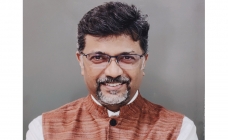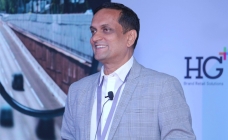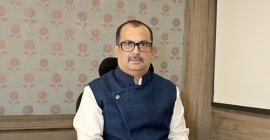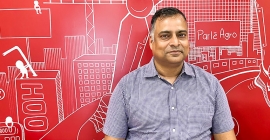‘If you get the right people on board, the payback is very quick’
By Rajiv Raghunath - December 26, 2022
Consultant, Advisor & Board Member, Sunder Hemrajani, former Managing Director of Times OOH, asserts that OOH organisations must continuously evolve and get talent from outside the industry. Edited excerpts of the interview with Rajiv Raghunath.
In 2007 when you took over as MD of Times Innovative Media, what were the major challenges to be addressed from the change management perspective, particularly in regard to the talent required at the senior, mid and junior-levels to establish Times OOH’s business leadership?
In early 2007, Times OOH acquired media rights at two large airports – Delhi and Mumbai. In retrospect, those were great acquisitions. At that time, it was a leap of faith because the company’s revenue for FY2007 was just about Rs 33 crore. There were several challenges. The entire team barring very few had experience in selling traditional media like hoardings and bus shelters media. They were not trained to sell airport media. So, my first challenge when I joined Times OOH was to get the team to understand the business we were in and to build the capabilities required. Besides, we had to get the whole team aligned to a different way of thinking.
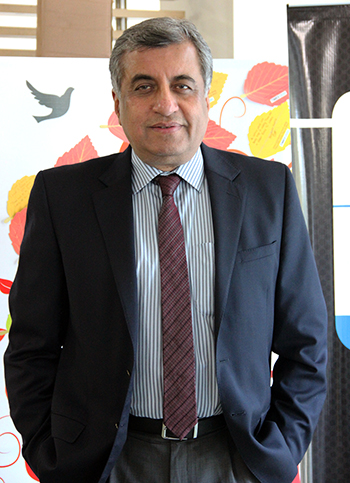 Transiting from selling traditional media to airport media needed a huge leap in capability. The first challenge was to understand what we could offer to our clients, to our customers. In those years, the way airport media was sold by the media owners was – ‘here is a site and this is the price’. We had to transit from there. Airport media was not about selling sites but eyeballs of target audiences to the brand owners.
Transiting from selling traditional media to airport media needed a huge leap in capability. The first challenge was to understand what we could offer to our clients, to our customers. In those years, the way airport media was sold by the media owners was – ‘here is a site and this is the price’. We had to transit from there. Airport media was not about selling sites but eyeballs of target audiences to the brand owners.
When we did our first round of research, we realised that 93% of the air travellers were from SEC A+ and A categories. So, we had the premium audience at the airports, and we had to communicate this to our clients.
Airport media had to be marketed and not sold, for which a different mindset was required. While some of the team members were quite okay with that change, some others were stuck in the old paradigm. Also, in those years the integrity levels in the outdoor advertising industry, sorry to say, were not very high. As we tightened the controls, some people left on their own, while others were asked to do so. We hired high-quality talent from diverse industries, people who understood the consumer side of the business.
It was a difficult transition, made even more difficult because of the global financial crisis in 2008-09. On the whole, moving the commoditised business to a value proposition, was a challenge.
How much had your corporate experience working with majors like HUL contributed to your pioneering initiatives at Times OOH? Do you subscribe to the view that OOH requires people from other industries to bring about transformative changes in this industry?
My time with Hindustan Lever was a huge milestone for me in my career. It was significant because you put all your learnings into practice. You start with understanding the needs of the consumers and then you market brands to them with a value proposition relevant to that segment of consumers.
If you look at this business too, you had to understand the profile and needs of the travellers -- what do they buy, where do they buy, what categories are they really interested in etc. So we did that. We developed a proposition that worked with our global and domestic clients. We got some long-term business that saw us through the difficult period.
What worked at the airport could work for other assets in transit media. What also helped us was the value that we brought to the client through innovation. In 2012. I still remember almost 18% of our business at Delhi Airport came from innovation.
The airports offered a platform to engage with the customer. OOH was always seen as a reminder medium, but the advantage of airport media is that you could move the consumer up the value chain -- from ‘awareness’ to ‘engagement’ and finally to ‘experience’. The potential consumer gets to experience the brand. For example, we used to display newly launched cars at the airports. Now for the consumer, it’s not just awareness. He's engaging with the car and if he likes what he sees, he leaves a visiting card and next day, gets a call from the dealer for a test drive. You are getting the consumer to experience the brand. And that's what big monies were paid for.
When I joined Times OOH, transit media was about 14% of the OOH industry, and by the time I left in 2014, it was almost 30%. Moreover, it was the airport media business that helped Times OOH to become the market leader. In fact, we were bigger than number two, three and four OOH media operators put together. Our faith in hiring and developing talent from outside the OOH industry was redeemed.
What measures were initiated in your years with Times OOH regarding talent acquisition, development, and retention?
Immediately after the effects of the market meltdown were over in 2010, we started the strategic planning process. We started the annual offsite meetings to draw up a 3-year rolling strategic plan and an annual operating plan. We would then share the plans with the Board of Directors and get their alignment. Capability building was an important pillar of these plans. As regards talent acquisition, we hired a lot of talent from outside the OOH industry. As we were hiring a lot of new people, it was important to align them with the strategy.
In 2011, we started a management trainee (MT) programme. We took people from reputed management schools and offered them a career in the company. As the industry was changing, the young people were expected to manage change, and then lead the change into the future.
When we introduced DOOH media at the Delhi Airport, it was a huge leap for us. So, we got an expert on DOOH, Tom Green from the US to hold training sessions for our team. So, investments were made to upgrade the skills of the team, and this investment paid off as the DOOH media took off.
With technology increasingly influencing the course of OOH business, do you see the need for different skillsets to be brought into the industry talent pool, and what would be the best way to build this for the benefit of the industry as a whole?
Absolutely yes. Based on my experience; I can say you need different skill sets. It’s not a one-time occurrence. You must continuously evolve as an organisation and get talent from the outside. If you get the right people on board, I think the payback is very quick. I feel the challenge here in this industry is that you need more and more companies to embrace this approach, which is a big challenge.
This is not easy. It means change for everyone. The industry should pay greater attention to technology adoption and suitable talent acquisition and development.
While the industry does require good talent, do professionals see a promising long-term career in OOH?
Yes, when we took young people from B-schools, we provided them high-quality management trainee programme and offered a promising career in the company. However, some of them didn’t see the opportunity for a long-term career in the OOH industry. Hence, in due course, some left and joined other companies in different industries. They were good talent but didn't see a future in OOH. Also, if the industry keeps shrinking, why would the talent stay on?
However, now that the industry is embracing programmatic OOH, it can offer an attractive long-term career proposition.
Would you recommend any pan-industry initiatives to help build a strong, large, future-proofed talent pool?
The Indian Outdoor Advertising Association (IOAA) must drive some of these industry-wide initiatives, along with all media owners, advertisers, and agencies.
If you carry on with your old practices, this industry won’t get anywhere. You have to bring in fresh talent. You must bring in fresh thinking and innovation because this is a huge opportunity. I think this is the defining moment for the industry.

Stay on top of OOH media trends

